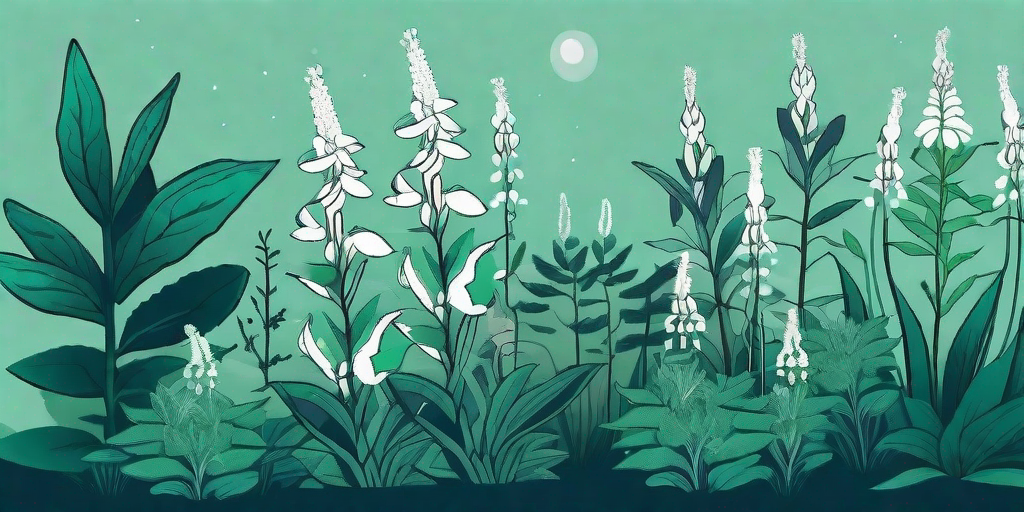
In the world of gardening, it's not all sunshine and roses. Sometimes, it's all about the shade. And when it comes to shade-loving plants, salvias are the unsung heroes of the garden. These hardy perennials are not only beautiful, but they can also thrive in the dark corners of your garden where other plants fear to tread. So, let's delve into the shady world of salvias and discover how they can bring life and color to your garden's darkest corners.
Understanding Salvias: The Shade-Loving Superstars
Salvias, also known as sage, are a diverse group of plants that belong to the mint family. With over 900 species to choose from, there's a salvia for every garden. But what makes these plants truly special is their ability to thrive in the shade. While most plants crave sunlight, salvias are perfectly content to bask in the shadows.
But don't let their love for the dark fool you. Salvias are anything but dull. They come in a variety of vibrant colors, from fiery reds to cool blues, and their aromatic leaves add a sensory delight to any garden. Plus, they're low maintenance and drought tolerant, making them a dream come true for the busy or forgetful gardener.
Why Do Salvias Love the Shade?
Salvias have adapted to thrive in a variety of environments, from the sunny Mediterranean to the shady woodlands. Their secret lies in their leaves. The leaves of shade-loving salvias are typically larger and darker in color, allowing them to absorb as much light as possible, even in low-light conditions.
Additionally, salvias have a unique ability to adjust their growth based on the amount of light they receive. In the shade, they grow taller and spread out their leaves to maximize light absorption. In contrast, in sunnier conditions, they grow shorter and more compact to prevent water loss.
How to Grow Salvias in the Shade
Now that we've sung the praises of these shadow-loving superstars, let's get down to the nitty-gritty: how to actually grow salvias in the shade. Fear not, dear gardener, for this is a task that even the greenest of thumbs can handle.
Choosing the Right Salvia
First things first, you need to choose the right salvia for your garden. While all salvias can tolerate some shade, some species are better suited for shady conditions than others. For example, Salvia guaranitica, also known as blue anise sage, and Salvia involucrata, or roseleaf sage, are both excellent choices for shady gardens.
When choosing your salvia, consider the color and height you want for your garden. Salvias can range from low-growing groundcovers to towering shrubs, and their flowers can be any color of the rainbow. So, let your imagination run wild!
Planting Your Salvia
Once you've chosen your salvia, it's time to get planting. Salvias prefer well-drained soil, so make sure to choose a spot in your garden where water doesn't pool. If your soil is heavy clay, consider adding some compost or other organic matter to improve drainage.
When planting your salvia, dig a hole twice as wide and just as deep as the root ball. Place the plant in the hole, making sure the top of the root ball is level with the soil surface. Then, backfill with soil, firming it gently around the roots. Water thoroughly, and voila! You've successfully planted your salvia.
Caring for Your Shade-Loving Salvias
Now that your salvias are happily settled in their shady new home, it's time to learn how to care for them. Thankfully, salvias are low-maintenance plants, so they won't require too much of your time or effort.
Watering
Salvias are drought-tolerant plants, which means they don't need much water. In fact, overwatering can be more harmful than underwatering. As a rule of thumb, water your salvias once a week during dry periods, and less often during rainy seasons. Always check the soil before watering; if it's still moist, hold off on the water.
Pruning
Pruning your salvias will help keep them healthy and promote more blooms. In general, you should prune your salvias in early spring to remove dead or damaged wood and to shape the plant. During the growing season, you can also deadhead spent flowers to encourage more blooms.
FAQs About Growing Salvias in the Shade
- Do all salvias like shade?
While all salvias can tolerate some shade, some species are better suited for shady conditions than others. Always check the specific requirements of the species you're interested in.
- Can salvias grow in full shade?
Most salvias prefer partial to full sun, but some species can tolerate full shade. However, they may not bloom as profusely in full shade.
- Do salvias need a lot of water?
No, salvias are drought-tolerant plants and don't need much water. Overwatering can be more harmful than underwatering.
- What type of soil do salvias prefer?
Salvias prefer well-drained soil. If your soil is heavy clay, consider adding some compost or other organic matter to improve drainage.
Conclusion
So there you have it, the shady business of growing salvias. These shade-loving superstars are a great addition to any garden, bringing color, fragrance, and life to those dark corners. So why not give salvias a go? After all, in the world of gardening, it's always good to embrace the dark side.















